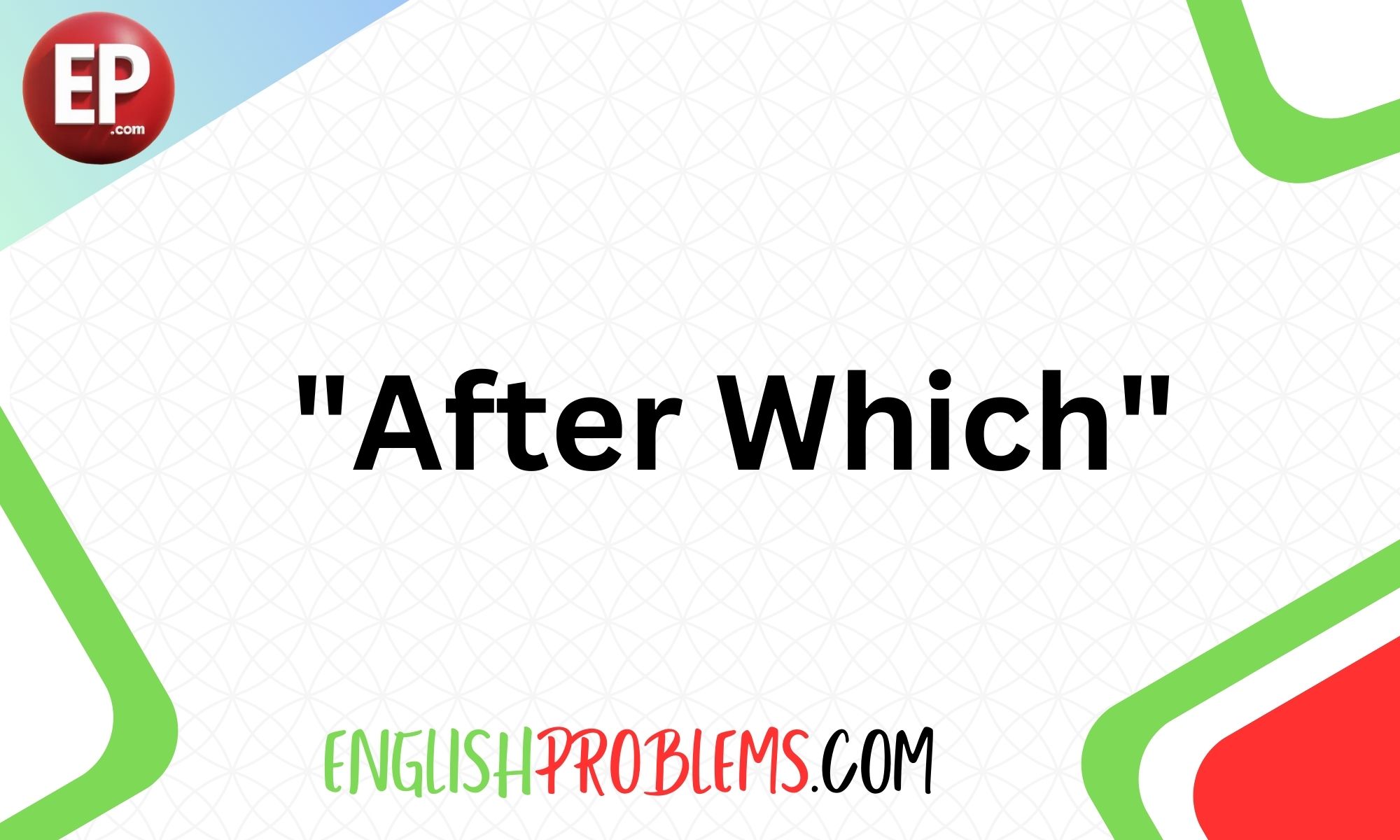Understanding how to use phrases like “after which” correctly can greatly enhance your writing.
This guide provides an in-depth look at how to use “after which” effectively, with practical examples, sentence structures, and tips to avoid common mistakes.
What Is “After Which”?
Definition and Function
The phrase “after which” is a conjunction or relative adverb that connects two parts of a sentence. It typically links a time-related action or event to a subsequent clause. In simpler terms, it indicates that something happens following another event.
Example:
- “We went to the park, after which we had lunch.”
In this sentence, “after which” links the visit to the park with the subsequent lunch.
When to Use “After Which”
“After which” is used to refer to a specific event or period that precedes another action. It’s often used in formal writing or complex sentences to provide clarity and precision. Here’s when you should consider using it:
- To Describe Sequential Actions: When detailing a series of events in a clear, logical order.
- In Formal Writing: To maintain a formal tone, especially in academic or professional contexts.
- In Complex Sentences: To connect two related clauses where the second clause follows the first.
Alternative Phrases:
- “After that”
- “Following which”
Sentence Structure with “After Which”
Basic Structure
The basic structure for using “after which” in a sentence is straightforward. It typically follows the pattern:
[Action/Event 1], after which [Action/Event 2].
Examples:
- “She completed her degree, after which she started working at a law firm.”
- “The meeting was rescheduled, after which the team discussed the new timeline.”
Complex Sentences
In complex sentences, “after which” can connect more intricate ideas, often involving multiple clauses. The structure remains similar but the sentences become more layered.
Examples:
- “The project was approved by the committee, after which the development phase began, leading to a successful launch.”
- “He finished his novel, after which he took a long vacation, during which he explored several new countries.”
Common Pitfalls
While “after which” is useful, it can be misused. Here are common mistakes and tips to avoid them:
- Overuse: Using “after which” too frequently can make writing seem repetitive. Tip: Vary your sentence structure with alternatives like “following which” or “subsequent to which.”
- Misplacement: Placing “after which” too early in a sentence can confuse readers. Tip: Ensure it clearly follows the event or action it references.
Examples and Analysis
Simple Sentences
Here are some straightforward examples to illustrate proper use:
- “The team finished their project, after which they celebrated.”
- Analysis: This sentence clearly indicates that the celebration occurred immediately following the project’s completion.
- “She submitted her report, after which she received feedback from her supervisor.”
- Analysis: The feedback came after the report submission, making the sequence of events clear.
Complex Sentences
More complex examples show how “after which” can connect multiple ideas:
- “The new policy was implemented, after which the staff underwent training, during which they learned about the changes.”
- Analysis: This sentence shows a sequence of events involving implementation, training, and learning.
- “He graduated from college, after which he moved to a new city and started a job, eventually leading to a promotion.”
- Analysis: The sequence includes graduation, moving, starting a job, and receiving a promotion.
Comparisons
Here’s how sentences with “after which” compare to those using alternative phrases:
- With “after which”: “The event was planned, after which the invitations were sent out.”
- With “following which”: “The event was planned, following which the invitations were sent out.”
Both phrases serve a similar function but can vary slightly in tone and formality.
Practical Application
Writing Tips
When incorporating “after which” into your writing, consider the following tips:
- Clarity: Ensure the phrase clearly connects two events or actions.
- Formality: Use “after which” for formal writing contexts, while simpler alternatives may suit less formal settings.
- Variation: Mix up your sentence structures to avoid repetition.
Editing and Proofreading
When reviewing your work:
- Check Placement: Verify that “after which” follows the event it references.
- Read Aloud: Reading sentences out loud can help ensure they sound natural and clear.
Common Signs of Misuse:
- Confusing or convoluted sentence structures.
- Lack of clear connection between clauses.
Conclusion
Summary
Understanding how to use “after which” can enhance your writing by providing clarity and precision in detailing sequential actions. It’s essential for formal and complex sentences, ensuring that your writing flows logically.
Final Thoughts
Correct usage of “after which” contributes to effective and clear communication. By applying the tips and examples provided, you can master this phrase and improve the quality of your writing.
Call to Action
Practice using “after which” in your sentences to become more comfortable with its application. Consider reviewing your past work and revising sentences to incorporate this phrase effectively.
Additional Resources
Further Reading
- “The Elements of Style” by William Strunk Jr. and E.B. White: A classic guide to clear and concise writing.
- “Grammar Girl’s Quick and Dirty Tips for Better Writing” by Mignon Fogarty: A resource for practical grammar tips.
Interactive Tools
- Grammarly: An online tool that helps with grammar and style suggestions.
- Hemingway Editor: A tool for improving sentence clarity and readability.
This guide provides a thorough understanding of how to use “after which” effectively in your writing. By mastering this phrase, you can enhance the clarity and professionalism of your sentences.

Emily Johnson is a seasoned writer with a sharp eye for grammatical accuracy. Her detailed guides and helpful tips make her a trusted source for anyone looking to enhance their understanding of English grammar and elevate their writing.










